Has Oil’s Problem Been Solved?

Over the weekend, there was a surge of excitement in Houston, where I live, over the potential selection of Rex Tillerson, the CEO of Exxon Mobil, as Secretary of State.
Given that Houston has about 1/10th of its economy focused solely on oil drilling and exploration, and has been hit hard by the downturn in oil prices, the announcement is perceived to be the solution to the oil problem. I spent a good bit of time talking about the issue with my friends at Fox26.
Yes, there is little doubt that between the perceived cuts to production from the recent OPEC meeting, the selection of Tillerson as Secretary of State, and now former Texas Governor Rick Perry being considered for the Department of Energy, the psychologically “bullish” backdrop for oil prices is in place. However, do any of these events address the long-term headwinds of oil to any significant degree?
With respect to the oil cuts, this is the 4th cut in production by OPEC since the turn of the century. These cuts in production did not last long, generally speaking, but tend to occur at price peaks, rather than price bottoms, as shown below. This is because OPEC talks much about cutting production prior to the act so prices tend to front-run the actual decision.
(Click on image to enlarge)
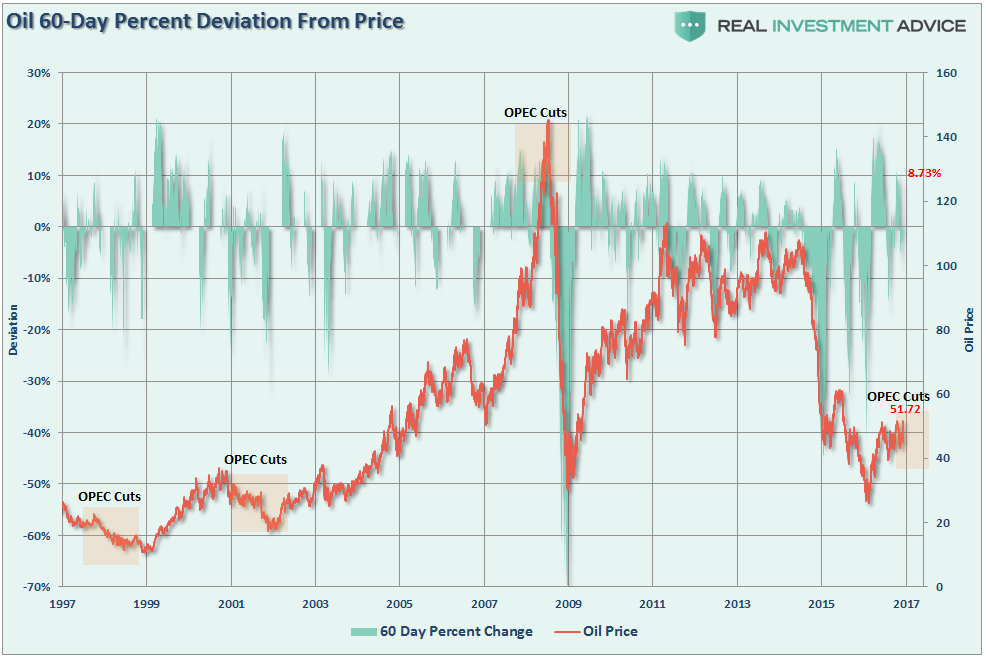
With respect to Tillerson, his selection as Secretary of State bodes well for increases in global oil production and pipeline building in the future along with reduced regulations on oil production in the U.S. Furthermore, as I stated in the interview, look for removal of sanctions against Russia which will revive the previous Exxon/Russia dealings.
However, the last thing we need is MORE supply as it is the current levels of production of oil which remains the core problem currently. Increasing supply potentially creates a longer-term issue for prices globally particularly in the face of weaker global demand due to demographics, energy efficiencies, and debt.
However, many point to the 2008 commodity crash as THE example as to why oil prices are destined to rise in the near term. The clear issue remains supply as it relates to the price of any commodity. With drilling in the Permian Basin expanding currently, any “cuts” by OPEC are likely to be offset by increased domestic production. Furthermore, any rise in oil prices towards $55/bbl will likely make the OPEC “cuts” very short-lived.
(Click on image to enlarge)
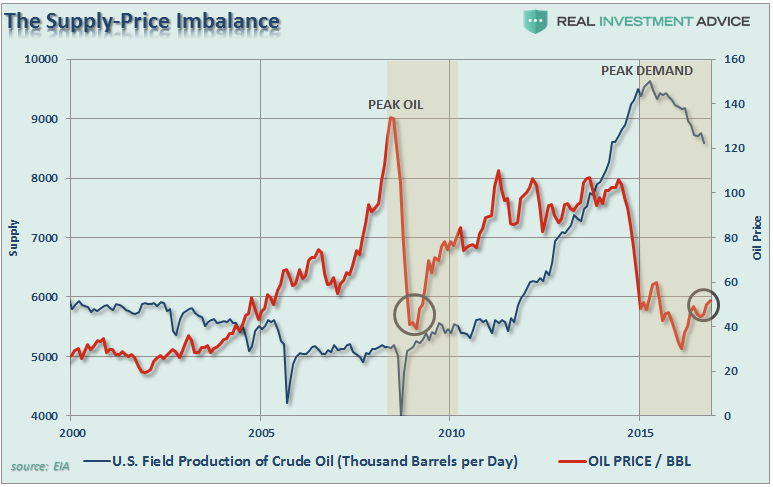
As noted in the chart above, the difference between 2008 and today is that previously the world was fearful of “running out” of oil versus worries about an “oil glut” today.
The issues of supply versus price becomes clearer if we look further back in history to the last crash in commodity prices which marked an extremely long period of oil price suppression.
(Click on image to enlarge)
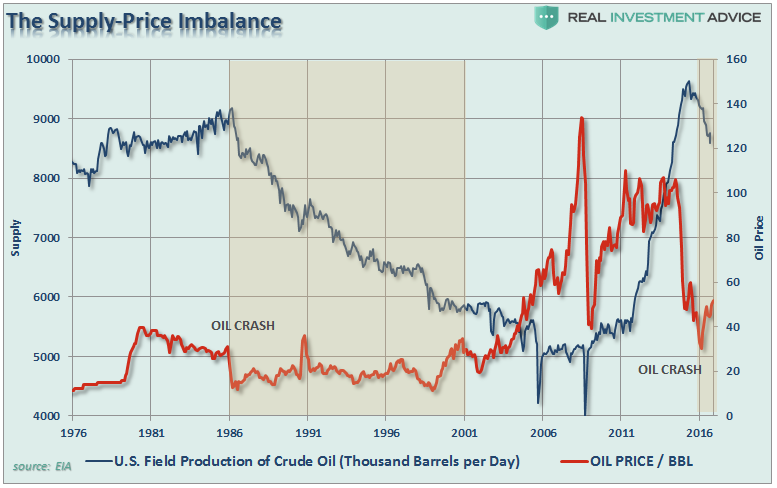
Ultimately, it is always about supply and demand.
In 2008, when prices crashed, the supply of into the marketplace had hit an all time low while global demand was at an all-time high. Remember, the fears of “peak oil” were rampant in news headlines and in the financial markets. Of course, the financial crisis took hold and quickly realigned prices with demand.
(Click on image to enlarge)

Of course, the supply-demand imbalance, combined with suppressed commodity prices in 2008, was the perfect cocktail for a surge in prices as the “fracking miracle” came into focus. The surge of supply alleviated the fears of oil company stability and investors rushed back into energy-related companies to “feast” on the buffet of accelerating profitability into the infinite future.
Banks also saw the advantages and were all too ready to lend out money for drilling of speculative wells which was fostered by Federal Reserve liquidity.
(Click on image to enlarge)
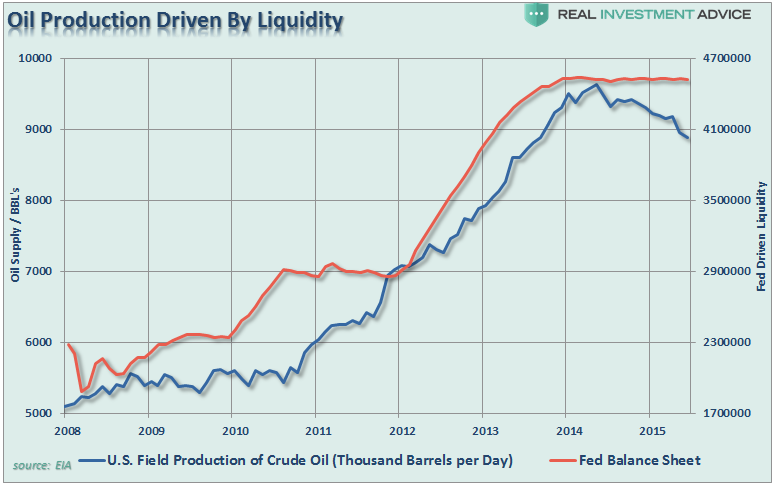
As investors gobbled up equity shares, the oil companies chased ever potential shale field in the U.S. in hopes to push stock prices higher. It worked…for a while.
The problem is now the supply-demand imbalance has reverted. With supply now back at levels not seen since the 1970’s, and demand waning due to a debt-cycle driven global economic deflationary cycle, the dynamics for a repeat of the pre-2008 surge in prices is unlikely.
(Click on image to enlarge)
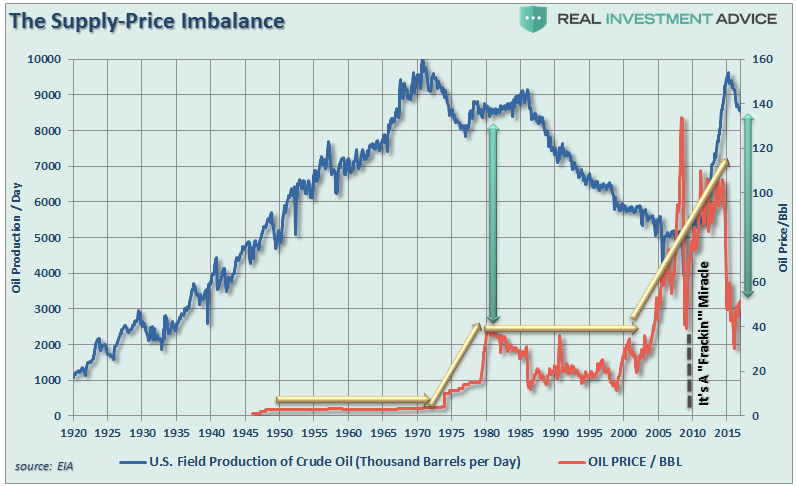
The supply-demand problem is not likely to be resolved over the course of a few months. The current dynamics of the financial markets, global economies and the current level of supply is more akin to that of the early-1980’s. Even is OPEC does reduce output, along with the U.S., it is unlikely to rapidly reduce the level of supply currently. Since oil production, at any price, is the major part of the revenue streams of energy-related companies, it is unlikely they will dramatically gut their production in the short-term. Therefore, it is quite likely that low oil prices are likely to be with us for quite some time.
However, this certainly hasn’t stopped Wall Street from jumping on the “bullish bandwagon” to lift oil prices over the last few months. Remember, while we talk about supply/demand as it relates to price in the long-term, it is “speculation” in the options market that sets price in the short-term. The problem, as shown by the net reportable crude oil contracts outstanding, is that “hope for higher oil prices” has pushed speculation back to previous extremes.
(Click on image to enlarge)
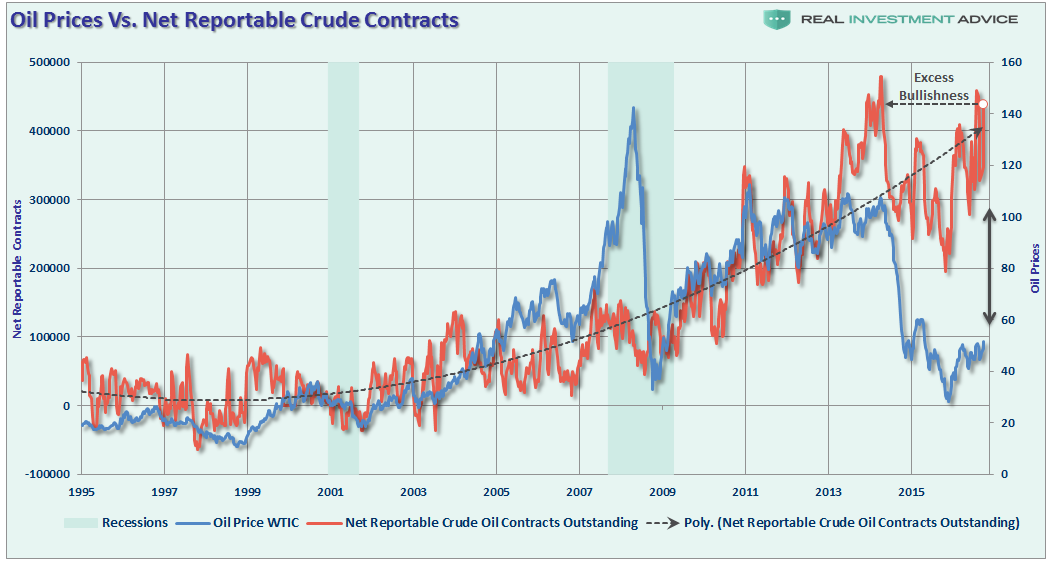
It is also worth noting, with the S&P 500 index hitting massive extremes as discussed in this past weekend’s newsletter, the correlation between the level of crude oil contracts and the financial markets.
(Click on image to enlarge)
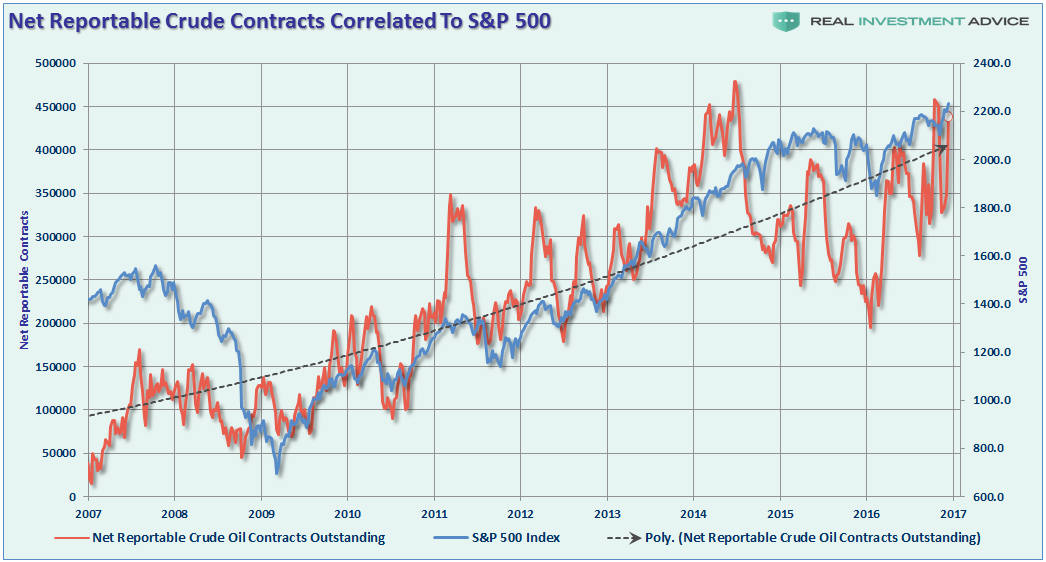
The current deviation between the S&P 500 and oil contracts will likely not last long. Either the S&P 500 is due for a more meaningful correction or there is about to be a rapid rise in oil prices. The latter is unlikely.
The supply/demand dynamics currently suggest that oil prices and energy-related investments could find a long-term bottom within the next year or so following the next recession. However, it does not mean those investments will repeat the run witnessed prior to 2008 or 2014. Such is the hope of many investors currently as their “recency bias” tends to overshadow the potential of the underlying fundamental dynamics. As I showed in this past weekend’s newsletter, valuations are at historic extremes currently.
(Click on image to enlarge)

Furthermore, prices of Energy stocks have been pushed to 4-standard deviation extremes in recent weeks. While investors have chased energy stocks on expectations of a very minor production cut from OPEC, little has been done to resolve the fundamental valuation problems which face a majority of these companies.
(Click on image to enlarge)
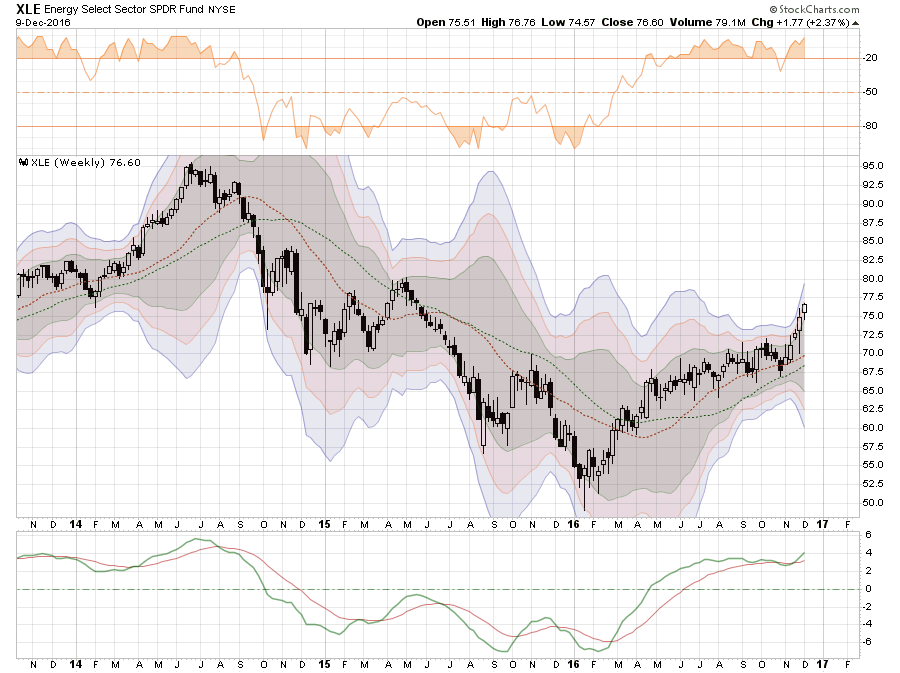
Notice, energy stocks were not even this overbought at the previous peak in energy prices.
For investors, the argument can be made that oil prices could remain range-bound for an extremely long period of time as witnessed in the 80’s and 90’s. It is here that lessons learned in the past will once again be re-learned with respect to the dangers of commodities, fundamentals, leverage and greed.
For the Houston economy, there is likely more pain to go through before we reach the end of this current cycle. There are still far too many individuals chasing yields in MLP’s and speculating on bottoms in energy-related companies to suggest a true bottom has been reached.
Just something to consider.
Disclosure: The information contained in this article should not be construed as financial or investment advice on any subject matter. Streettalk Advisors, LLC expressly disclaims all liability in ...
more


